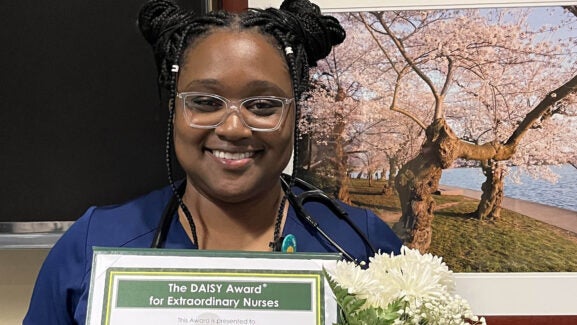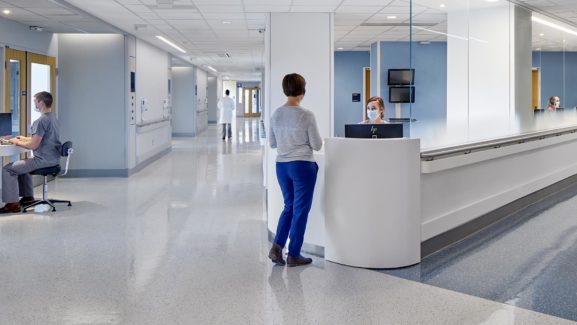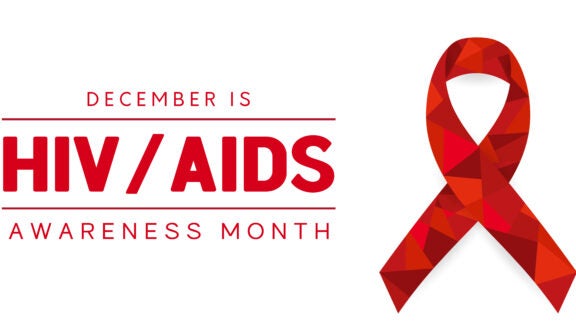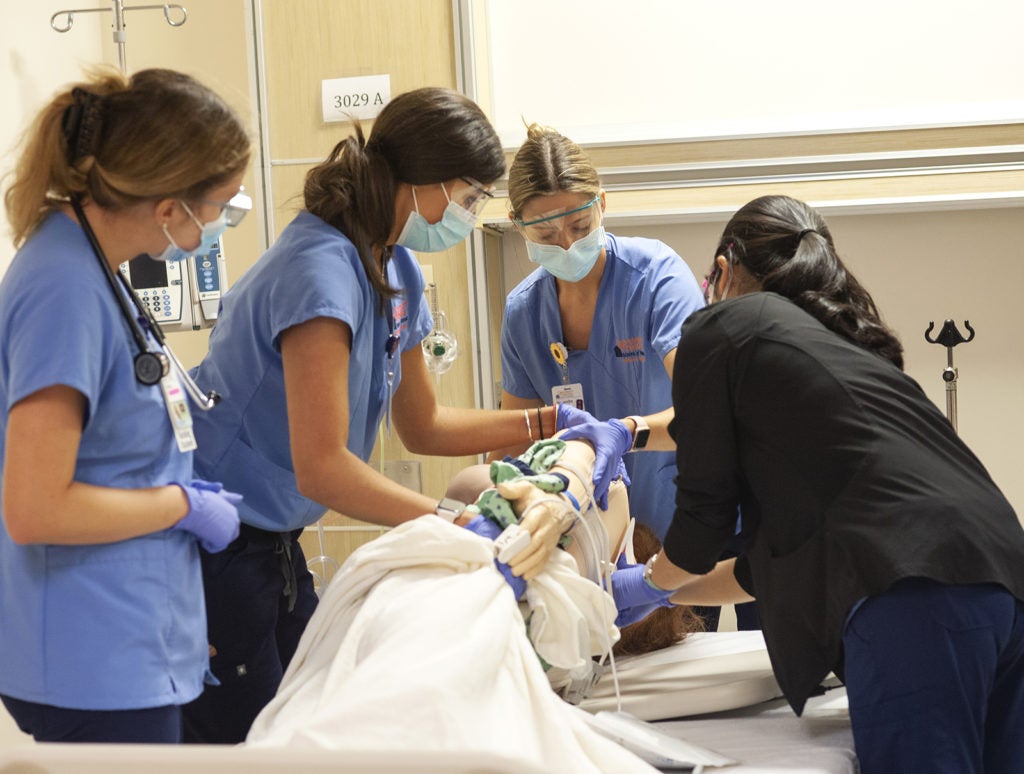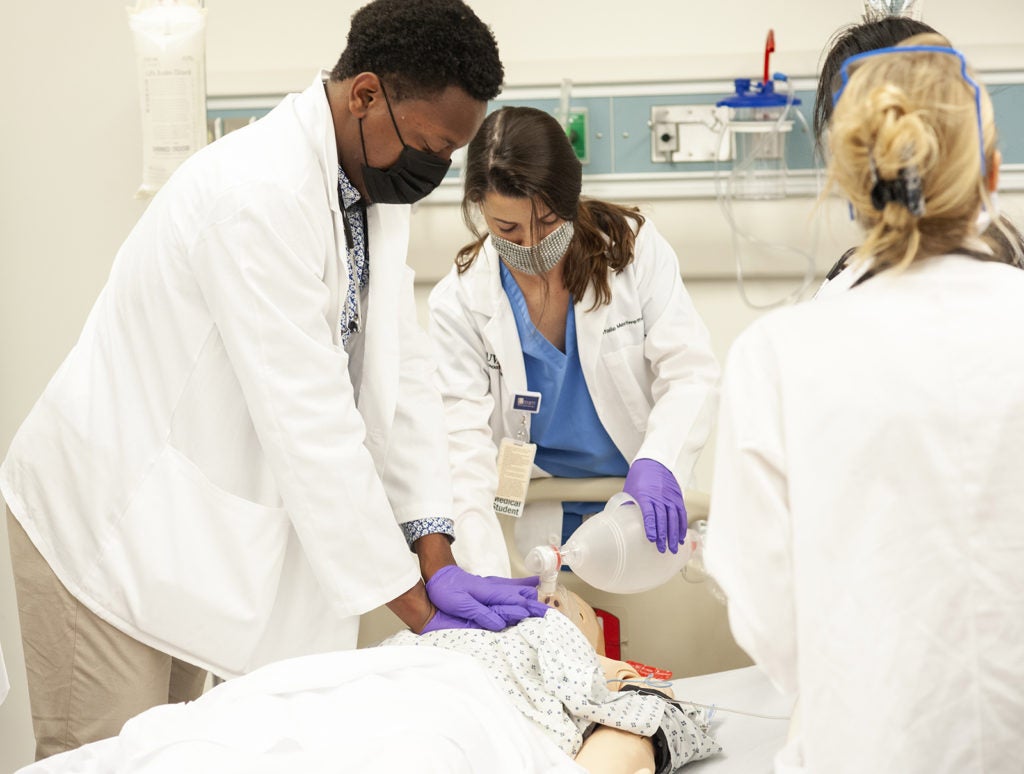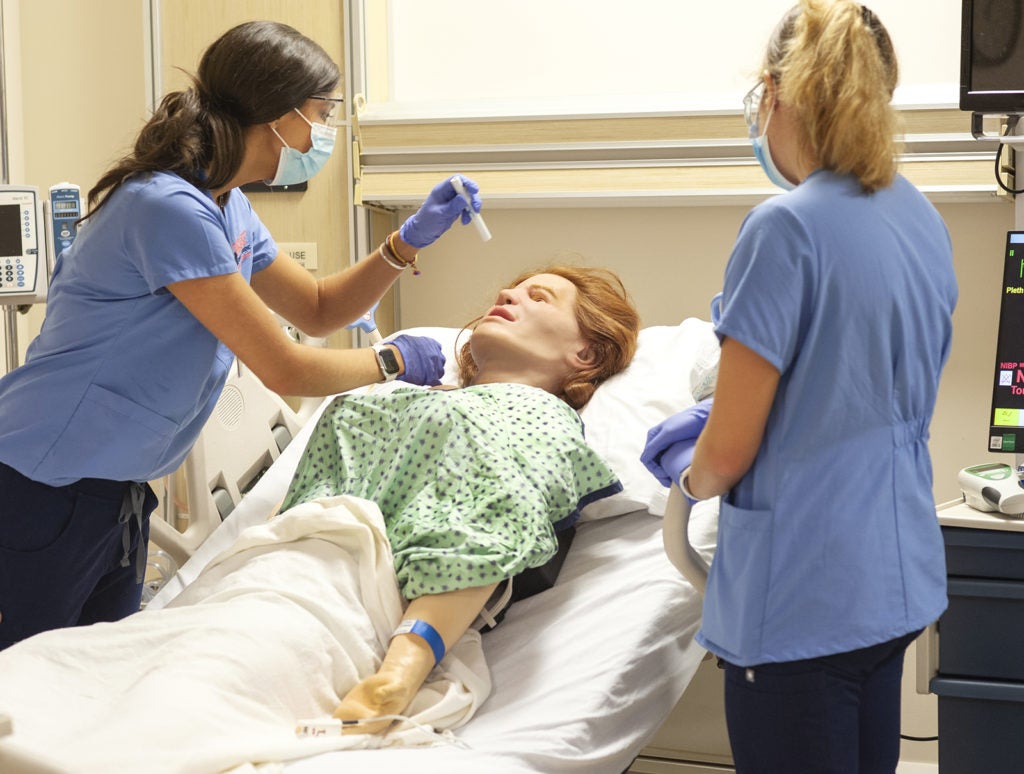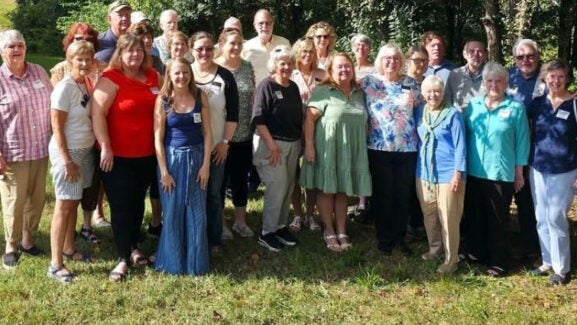
Schools of Medicine and Nursing Team Up to Create the University of Virginia Healthcare Simulation Collaborative
In early September, the University of Virginia School of Medicine and School of Nursing signed an agreement for a collaboration between the two Schools’ simulation centers, establishing the University of Virginia Healthcare Simulation Collaborative. The goals of this agreement are to facilitate interprofessional and interdisciplinary collaboration, use space and resources more efficiently, and develop centralized personnel management to strategically match workloads. Combined, UVA will have more than 25,000 square feet of simulation space.
The ink had barely dried on the paper when we were able to put the new shared-resources agreement into action. It was a small moment, but immediately illustrated its value. In mid-September, one of the School of Nursing simulators broke down. The solution: The School of Medicine wheeled over a spare simulator. It was that simple. Also, when the School of Nursing needed additional ultrasound machines for an event, the School of Medicine was able to provide them.
The philosophy of being good neighbors is nothing new to these centers. When the School of Medicine was about to buy several urinary catheter placement trainers, the School of Nursing lent their large collection of devices. A formalized agreement simply codifies that spirit and removes barriers so as to be even better partners.
Sharing Assets and Space Offers Important Benefits
Going forward, we envision this kind of shared assets and space to be common between the two Schools. From a stewardship aspect, it makes sense. We have specialized equipment on which we need to train students, but some of it is only used a few times a year. Doubling its usage with another set of students will not wear these items out, in terms of life cycle.
This agreement will reduce our overall expenses, too. Simulation education is incredibly valuable, but it requires expertise to operate the equipment. And that equipment is expensive. By pooling our resources, we will decrease costs for obtaining and maintaining these tools and will require fewer devices in our fleet (and their accompanying pricey service contracts).
Having two simulation centers will also allow us to streamline scheduling. For example: Every year at this time, we put the entire second-year School of Medicine class through simulations. That’s 52 separate simulations over the course of a week. That is a big lift for a single simulation center. Going forward, however, when we have high-demand and high-throughput events like this, we can use both centers to double the number of simulation bays to ease the burden on our faculty and staff — ultimately, making it a better experience for the students.
All eligible simulation specialists in both centers are credentialed by the Society for Simulation in Health Care, an uncommonly achieved mark of excellence. It is our hope that in the future, UVA’s Healthcare Simulation Collaborative will be accredited as a single UVA entity. We will share more on this as it develops.
The Best Part: Intangibles
Reducing costs is fantastic. Optimizing uptime on machines and fine-tuning schedules to maximize efficiencies is a beautiful thing. But the best part of this agreement is the part for which we cannot plan.
Our Schools have an incredible pool of talent, each with their areas of interest and expertise. And our students are bright, energetic, and eager. Bringing together SOM and SON faculty, staff, and students into a collaborative such as this broadens our overall skill set and makes us a more diverse group. Building on that diversity, we hope to implement interprofessional education in new ways. Having faculty, staff, and students from both Schools walk the same hallways may spark conversations, collaboration, and learning in ways we cannot foresee.
Combining the administration of the University of Virginia Healthcare Simulation Collaborative will provide a bird’s-eye view of both School’s simulation schedules and curricula. This will enable us to spot new opportunities for interprofessional education and cross-team collaboration. These interactions will be fantastic for students (and their future patients) because, as we all know, medicine is a team sport. Training together now means our medical and nursing students will be better equipped to work as interprofessional teams in the future.
Thank You, Faculty and Staff
None of this would be possible without the hard work, dedication, and commitment to medical education from team members in both Schools. Thank you to Vaia Abatzis, MD, Co-Director, Medical Simulation Center; Ryne Ackard, Director, Mary Morton Parsons Clinical Simulation Learning Center; Cathy Campbell, PhD, RN, Chair, Department of Acute and Specialty Care; Bethany Coyne, PhD, RN, Chair, Department of Family, Community & Mental Health Systems; Beth Epstein, PhD, RN, Associate Dean for Academic Programs; Allison Holt, Associate Dean for Finance & Administration; Keith Littlewood, MD, Assistant Dean, Clinical Skills Education; Stanley Lovett, Acting Director, School of Medicine Medical Simulation Center; John Teahan, Associate Dean for Administration; and our group of Simulation Operations Specialists who run the sim centers every day.
Through their efforts, we have combined two existing programs for the good of improving service to students, stewardship of resources, and professional education. Going forward, Ryne Ackard will serve as Operations Director for the Collaborative.
Meg Keeley, MD
Interim Senior Associate Dean for Education, School of Medicine
Harrison Distinguished Professor of Medical Education
Pam Cipriano, PhD, RN, FAAN
Dean, School of Nursing
Sadie Heath Cabaniss Professor of Nursing
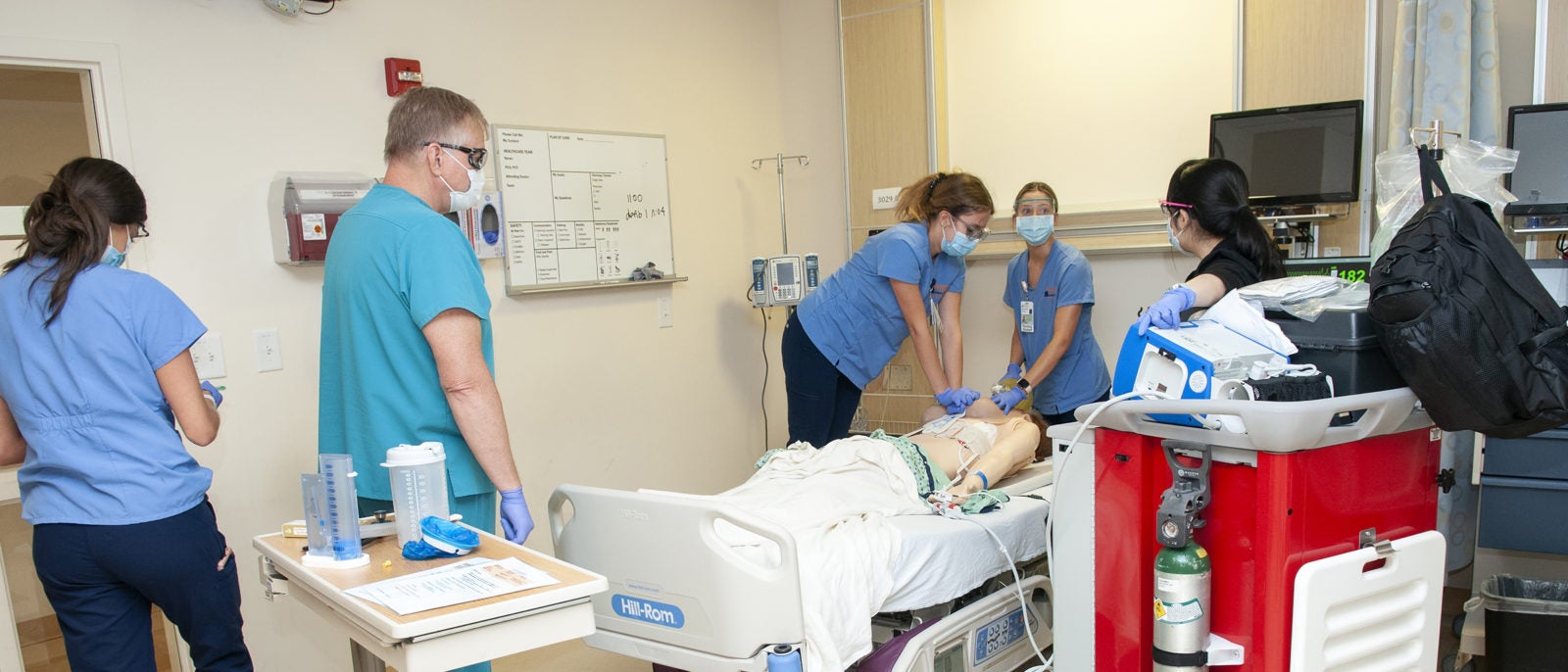
Latest News

